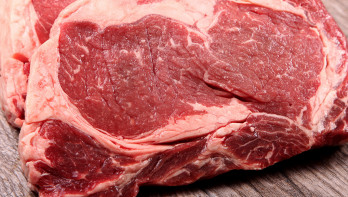Analysis Cattle & Beef
Supply of slaughter cattle seems to be drying up
The dynamics in the beef market have completely reversed after seven stable weeks. Where demand and supply were high in recent weeks, both are low this week. Although the low demand seems temporary due to the May holiday.
The slaughter price of cattle remains unchanged, as shown by the listing of Vee & Logistiek. The price of U-quality beef remains at €4.78 per kilo for the seventh consecutive week. Meanwhile, P-quality still stands at €2.98.
Until recently, reports from the beef sector were monotonous. The demand was strong, and the cattle supply was robust. This resulted in a market that remained balanced, keeping the price stable. During this period, many dairy farmers chose to slaughter less productive cows earlier due to high costs for manure removal and a relatively low milk price. As a result, slaughter figures remained above the five-year average throughout the year.
According to the latest slaughter data from RVO, this is still the case. In week 16, 10,547 cattle were slaughtered, while based on the five-year average, the slaughter figure would be around 9,200 cattle. However, these slaughter figures are two weeks behind, and according to insiders in the market, the figures no longer provide an accurate picture.
Abattoirs and traders agree that significantly fewer cattle are coming in. They hear in the market that dairy farmers no longer have much low-productive cattle left. Therefore, there is no longer a reason to bring extra dairy cattle for slaughter. Abattoirs indicate that the slaughter lines are still full, although they feel compelled to slaughter fewer cattle and more calves.
Low demand is temporary
Despite the lower supply, the market remains balanced. The supply side of the market is less active. Abattoirs attribute this to the May holiday. During these weeks, many families are on vacation, resulting in lower demand in Northern Europe. In addition, there has been little warm weather, so the extra demand for barbecues has not yet started. The market's expectation is that this situation will not last long. Good weather cannot stay away permanently, and after the May holiday, domestic demand will increase again. Livestock traders therefore expect prices to rise further in both the meat and livestock markets. Especially the demand for mince and steaks may increase slightly with better weather.
However, on the other hand, Albert Heijn has launched a concept of half-and-half minced meat with chicken mince. Given Albert Heijn's focus on sustainable food, it is not surprising if this has a negative impact on the sale of mince. This could certainly have an impact, as the addition of chicken meat further reduces the price of the minced meat. Additionally, it is a competitor to pure beef mince for consumers who object to eating pork and traditionally avoid half-and-half minced meat for this reason.




